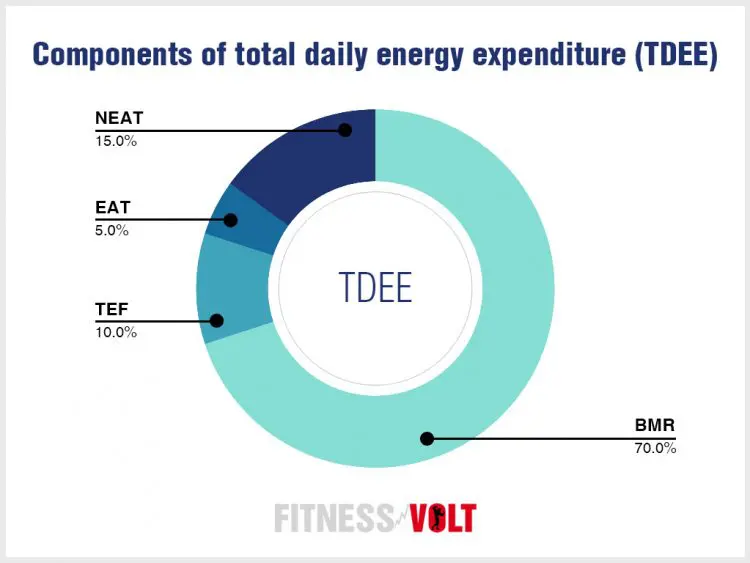When it comes to weight loss, many people are expert procrastinators. They say things like, “I’ll start my diet next month,” or “I’ll start losing weight on January 1st.”
Unfortunately, delaying your weight loss journey often means it never begins. The longer you wait, the more effort you’ll need to reach your goals.
Instead of waiting, why not start losing weight TODAY? The sooner you start, the sooner you’ll see results!
Commit to improving your diet and increasing your exercise for the next four months. Treat this period as your personal body transformation challenge. You’ll be amazed at the difference 16 weeks can make.
So, how much weight can you lose in 16 weeks? Keep reading to find out!
How Much Weight Can You Lose in Four Months?
Weight loss varies from person to person. Some individuals lose weight quickly, while others may find it takes longer. Your diet and exercise regimen will also impact your weight loss speed.
Level Up Your Fitness: Join our 💪 strong community in Fitness Volt Newsletter. Get daily inspiration, expert-backed workouts, nutrition tips, the latest in strength sports, and the support you need to reach your goals. Subscribe for free!
However, you can estimate potential weight loss over four months/16 weeks.
It’s generally accepted that a pound of fat equals 3,500 calories. To lose a pound of fat, you need to create a 3,500-calorie deficit, known as a negative energy balance.
If you require 2,500 calories per day to maintain your current weight but only consume 2,000, you will create a 3,500-calorie deficit every seven days (500 x 7), leading to a loss of one pound per week. Multiply that by 16 weeks, and you could lose 16 pounds in four months.
Creating a more significant deficit will result in greater weight loss.
For instance, a daily deficit of 750 calories will lead to a 24-pound weight loss over four months, while a 1000-calorie deficit should result in losing 32 pounds.
However, avoid cutting your calorie intake too drastically. Extreme calorie reduction can cause hunger and cravings, increasing the likelihood of breaking your diet. A moderate deficit of 500-750 calories works best for most people.
To summarize, you can expect to lose 16 to 32 pounds in four months. Your actual results will depend on your diet, exercise program, genetics, and dedication.
How to Create a Calorie Deficit
To create a calorie deficit, calculate how many calories you need to consume per day to maintain your current weight, known as your Total Daily Energy Expenditure (TDEE).
Your TDEE comprises several components:
- BMR – Basal Metabolic Rate, the number of calories burned in 24 hours at rest and in a fasted state.
- TEA – Thermal Effect of Activity, the calories burned during physical activities like exercise, chores, and walking.
- TEF – Thermal Effect of Food, the energy used for eating, digesting, and transporting food.
So, your TDEE equals BMR + TEA + TEF.
This is the total number of calories you need to consume to maintain your current weight at your current activity levels.
While you could calculate your TDEE yourself, using our online TDEE calculator is much easier and 100% free!
Once you determine your TDEE, subtract 500-1000 calories from that number to create your calorie deficit. For example, if your TDEE is 2,350 and you want to lose weight comfortably, you might subtract 500, resulting in 1,850 calories per day.
If you have strong willpower and can tolerate hunger, you could cut 1000 calories from your TDEE, giving you a daily goal of 1,350 calories.
If all this math is overwhelming, use our weight loss calculator to simplify these calculations.
Three Ways to Create A Calorie Deficit
To lose weight, provide your body with fewer calories than it needs, forcing it to burn fat for energy. Here are three methods to create a calorie deficit, so you can choose the best option for your goals:
Diet only
It’s possible to lose weight just by eating less. For example, to cut 500 calories from your daily food intake, you could:
- Eat smaller meals
- Eat fewer meals
- Stop eating snacks
- Switch to low-fat foods
- Cut out processed food
- Cut out sugar
- Replace high-calorie ingredients with lower-calorie alternatives
However, relying solely on calorie restriction can leave you feeling hungry, especially with a 750-1000 calorie deficit. You’ll also need to give up some of your favorite foods, and hunger will be a constant companion.
Given that the average person eats 2,000-3,000 calories per day, you’ll need to significantly reduce your food intake to create a deficit through dieting alone. Unfortunately, very low-calorie diets are rarely sustainable.
Level Up Your Fitness: Join our 💪 strong community in Fitness Volt Newsletter. Get daily inspiration, expert-backed workouts, nutrition tips, the latest in strength sports, and the support you need to reach your goals. Subscribe for free!
Related: Fix Your Diet Forever in Six Weeks!
Exercise only
Exercise and physical activity burn calories, and the more you do, the greater your calorie deficit. It’s possible to lose weight without eating less if you exercise enough.
The challenge is that exercise is tiring and time-consuming. Burning 500+ calories in an hour daily can be exhausting. Also, intense workouts can increase hunger, potentially causing you to eat more and negate your efforts.
Exercise helps with weight loss, but relying solely on exercise is seldom effective. On days you don’t work out, you won’t create a calorie deficit, stalling your progress.
The best workout for weight loss is one you enjoy and can do regularly. For some, that means lifting weights. For others, it might be cardio, sports, or walking more.
Being physically active daily usually leads to easier, faster weight loss.
Diet and exercise combined
Neither diet nor exercise alone works well for weight loss. Combining them, however, leads to quicker and easier results.
When you eat less and exercise, you don’t have to starve yourself or endure exhaustive daily workouts. Instead, eat a little less and do moderate workouts to create your calorie deficit.
For example, instead of reducing 500 calories a day from your diet or working out for an hour daily, eat 250 calories less and do a moderate 30-minute workout to burn an additional 250 calories. This approach is more sustainable than relying on diet or exercise alone.
Experts generally agree that diet and exercise combined work better for weight loss than just eating less or exercising more.
On days when you don’t have the time or energy to exercise, maintain your weight loss progress by relying solely on dietary restrictions to meet your calorie goal. Conversely, increase workout intensity if you eat more than usual to maintain your calorie deficit.
What is the Best Diet for Weight Loss?
Contrary to popular belief, there is no single best weight loss diet – many work! As long as your chosen diet creates a calorie deficit, you can lose weight eating almost any kind of food – even junk food.
However, the process is easier if you focus on low-calorie, filling, and tasty foods. High protein and high fiber foods are particularly satisfying.
Ultimately, the best diet for weight loss is one that creates the necessary calorie deficit and is sustainable for you. Not for four hours, four days, or four weeks, but for the entire four months of your weight loss journey.
You can lose weight without changing the types of food you eat by simply eating less. There’s no need to go paleo, keto, or follow any restrictive diet if you don’t want to. Just consume fewer calories and you’ll succeed.
What is the Best Workout for Weight Loss?
Similar to diet, there is no single best workout for weight loss. All forms of exercise burn calories, whether it’s running, lifting weights, swimming, cycling, or yoga. Your caloric expenditure will increase as long as you move, engage your muscles, and elevate your heart and breathing rate. You can even garden or dance your way to a slimmer figure!
Some exercises burn more calories per hour than others, with energy expenditure linked to exercise intensity. The harder you work out, the more calories you’ll burn. However, intense exercise may limit how long or often you can work out.
We’ve created a library of calorie expenditure by activity calculators so you can see how many calories you burn per workout.
By reducing your calorie intake and increasing your physical activity, you should have no problem creating the energy deficit required for weight loss. Monitor your food intake, exercise regularly and consistently, and you could lose up to 32 pounds in four months!
Wrapping Up
Many dieters fail to lose weight because their plans are open-ended and lack a clear endpoint. This lack of direction and urgency can lead to skipped workouts or diet cheats.
If you keep taking your foot off the gas, progress will be slow, and you may stall or fail to lose weight.
Setting a four-month deadline helps keep you focused and motivated. With only 16 weeks to achieve your weight loss goals, you cannot afford to miss workouts or break your diet. An end date on your calendar can be very motivating.
How much weight will you lose in four months? That depends on your efforts!
Create a larger calorie deficit and put energy into your workouts, and you could lose 30 pounds or more. Even modest food intake reduction and moderate exercise should result in losing 16 pounds in 16 weeks.
The more you commit to the process, the more successful you’ll be. Start now, and you’ll reach your goals sooner!














